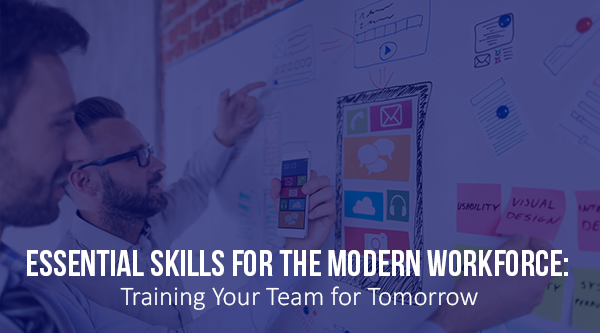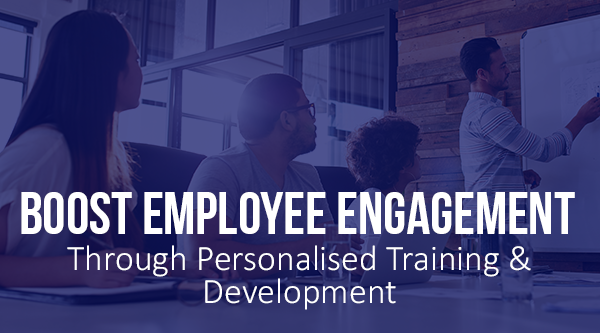Effective employee training is a cornerstone of any successful organisation. It not only ensures that employees have the skills and knowledge to perform their jobs effectively but also contributes to a positive work environment, increased productivity, and overall business growth.
So, when should employees be given training?
The answer is often: whenever necessary. But to make the most of your training investments, it’s important to prioritise and strategically plan your training initiatives.
Here are some key factors to consider when determining when to provide employee training:
1. New Hires
Onboarding: New employees need to quickly understand the company culture, their roles, and expectations.
Job-Specific Training: Provide tailored training to equip new hires with the skills necessary to succeed in their positions.
2. Skill Gaps
Performance Reviews: Identify areas where employees may be lacking in skills or knowledge through performance reviews.
Customer Feedback: Pay attention to customer feedback to determine if there are gaps in employee skills that are impacting customer satisfaction.
Technology Changes: If new technologies or software are introduced, provide training to ensure employees can use them effectively.
3. Regulatory Changes
Industry-Specific Requirements: Stay updated on industry-specific regulations and provide training to ensure compliance.
Legal Updates: Keep employees informed of any changes in employment laws or regulations.
4. Career Development
Employee Goals: Support employees in their career aspirations by offering training opportunities that align with their goals.
Succession Planning: Identify high-potential employees and provide training to prepare them for future leadership roles.
5. Performance Improvement
Underperforming Employees: If an employee is struggling, targeted training can help them improve their performance.
Coaching and Mentoring: Provide additional support through coaching and mentoring to help employees overcome challenges.
6. Continuous Learning
Industry Trends: Encourage employees to stay up-to-date with industry trends and best practices.
Professional Development: Offer opportunities for employees to attend conferences, workshops, or webinars.
7. Team Building and Collaboration
Interdepartmental Training: Building teamwork and collaboration by providing training that brings together employees from different departments.
Soft Skills Development: Enhance employees’ interpersonal and communication skills to improve teamwork and productivity.
8. Emergency Preparedness
Crisis Management Training: Prepare employees to handle emergencies and disasters through specialised training.
Safety Protocols: Ensure that employees are trained on safety protocols and procedures to prevent accidents.
Effective Training Strategies
Needs Assessment: Identify the specific training needs of your employees based on their roles, job responsibilities, and performance.
Variety of Methods: Offer a mix of training methods, such as classroom sessions, online courses, on-the-job training, and mentoring, to cater to different learning styles.
Regular Evaluation: Assess the effectiveness of your training programs to ensure they are meeting their objectives.
Feedback and Follow-up: Encourage employees to provide feedback on their training experiences and follow up to ensure they are applying the new skills.
Customisation: Tailor training programs to the specific needs and learning styles of individual employees.
Integration with Performance Management: Link training initiatives to performance goals and objectives.
Measurement of ROI: Track the return on investment of your training programs to justify the costs and demonstrate the benefits.
Additional Considerations
Budget Constraints: Consider the costs associated with training, including instructor fees, materials, and time away from work.
Time Commitment: Ensure that training aligns with employees’ schedules and does not disrupt their workflow.
Technology Integration: Utilise technology to deliver training more effectively and efficiently, such as through online courses or virtual classrooms.
Cultural Sensitivity: If your organisation is diverse, ensure that training materials and methods are culturally sensitive and inclusive.
Accessibility: Make training accessible to all employees, including those with disabilities.
External Partnerships: Consider partnering with external training providers or industry associations to access specialised expertise and resources.
By strategically prioritising employee training, you can create a more engaged, skilled, and productive workforce, ultimately driving business success. For more information on how to train your staff contact Optimum Results today for a free consultation.
 Reading time: 2 MinutesMay 28, 2025
Reading time: 2 MinutesMay 28, 2025 Reading time: 2 MinutesMay 8, 2025
Reading time: 2 MinutesMay 8, 2025 Reading time: 3 MinutesApril 22, 2025
Reading time: 3 MinutesApril 22, 2025 Reading time: 2 MinutesApril 15, 2025
Reading time: 2 MinutesApril 15, 2025 Reading time: 2 MinutesMarch 24, 2025
Reading time: 2 MinutesMarch 24, 2025 Reading time: 2 MinutesMarch 10, 2025
Reading time: 2 MinutesMarch 10, 2025

